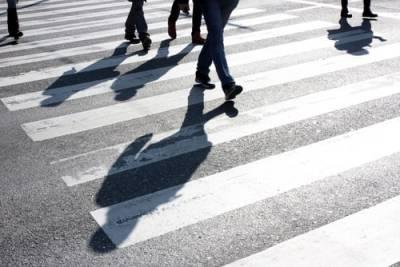What Are the Most Common Injuries Suffered in Pedestrian Accidents?
 According to the National Highway Traffic Safety Administration, there were more than 6,500 pedestrian fatalities in 2020, and around 55,000 people suffered injuries in pedestrian accidents. Those numbers are alarming, especially since pedestrian accident victims often suffer serious and catastrophic injuries that may require extensive medical treatment and cause them to lose income while they are recovering. In many cases, these accidents result in permanent disabilities. Victims who have been injured in these types of accidents will need to understand their options for pursuing compensation that will fully address the damages they have suffered.
According to the National Highway Traffic Safety Administration, there were more than 6,500 pedestrian fatalities in 2020, and around 55,000 people suffered injuries in pedestrian accidents. Those numbers are alarming, especially since pedestrian accident victims often suffer serious and catastrophic injuries that may require extensive medical treatment and cause them to lose income while they are recovering. In many cases, these accidents result in permanent disabilities. Victims who have been injured in these types of accidents will need to understand their options for pursuing compensation that will fully address the damages they have suffered.
Common Pedestrian Accident Injuries
People on foot are likely to experience severe bodily harm after being struck by a motor vehicle. The injuries that can occur may include:
-
Head injuries - Many of the most common—and most serious—types of injuries suffered in pedestrian accidents involve damage to the head and brain. Head injuries can range from mild concussions to moderate or severe traumatic brain injuries. These injuries can have lifelong consequences, and it is important for a victim to get checked out by a medical professional as soon as possible after an accident, since the symptoms of a traumatic brain injury will not always appear immediately.
-
Neck and back injuries - Injuries that affect the spinal cord and other parts of the neck and back are common in pedestrian accidents. Whiplash is a neck injury that can be caused by a sudden impact with a vehicle or the ground, and these injuries can be extremely painful, resulting in loss of range of motion, numbness or tingling in the shoulders and arms, and other serious symptoms. Back injuries can range from muscle strains to herniated discs or even spinal cord damage. Injuries affecting the spinal cord can result in partial or complete paralysis in the areas of the body below where the injury occurred.
-
Broken bones - Many pedestrians who are hit by cars suffer bone fractures. These fractures can range from small hairline cracks to full-blown compound fractures that require surgery to heal correctly. In some cases, broken bones can even puncture organs or cause internal bleeding. Fractures can take multiple months to heal, and a victim may be unable to work or perform other tasks while they are recovering.
-
Soft tissue injuries - These injuries may include strains, sprains, and contusions, and they may involve damage to tendons, ligaments, and muscles. A victim may experience significant restrictions to their range of motion in the parts of the body that were affected, and they may require surgery or physical therapy to regain function in these body parts and ensure that they will be able to complete work or other tasks they had been able to do before being injured.
-
Emotional trauma - It is also important to remember that pedestrian accidents often result in serious emotional harm in addition to a person's physical injuries. A victim may suffer from issues such as anxiety, depression, or post-traumatic stress disorder (PTSD). These conditions can be just as debilitating as any physical injury, and ongoing mental health treatment may be required during a person's recovery.
Contact Our Peoria Pedestrian Accident Lawyers
Pedestrian accidents often result in serious—and sometimes fatal—injuries. If you have been hit by a car while walking, it is important to get checked out by a medical professional as soon as possible so that any injuries can be properly diagnosed and treated. At Kanoski Bresney, our Decatur pedestrian accident injury attorneys can help you understand your options for seeking compensation for the damages you have suffered, including medical expenses, lost income, and pain and suffering. Contact us today at 888-826-8682 to schedule a free consultation.
Sources:
https://www.nhtsa.gov/road-safety/pedestrian-safety
https://www.ncbi.nlm.nih.gov/pmc/articles/PMC2859736/









